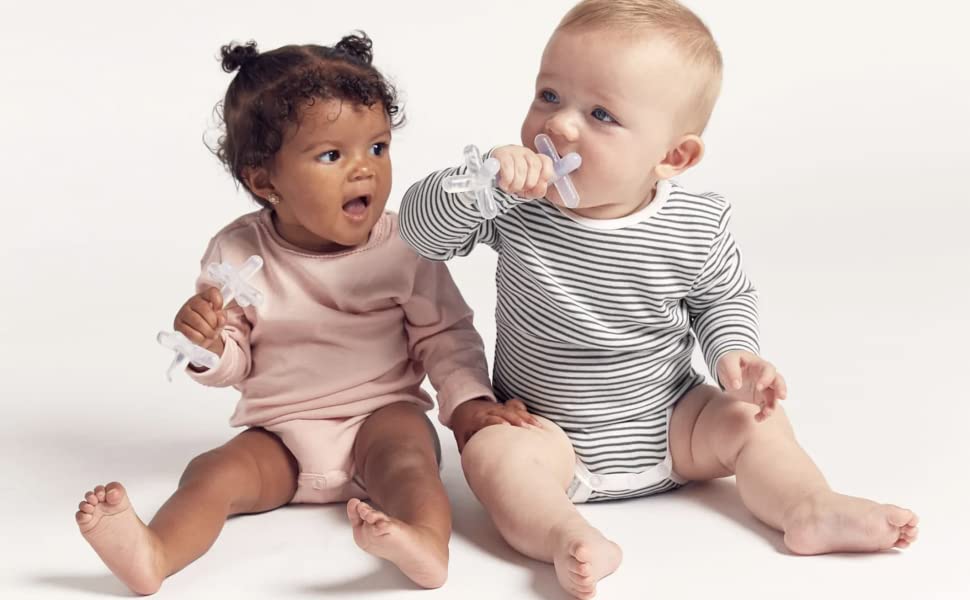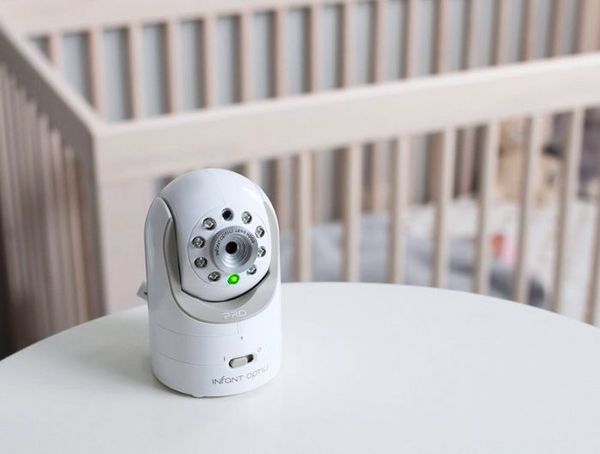In this article, we will discuss what do teething gums look like, the signs and symptoms of teething, as well as some tips for providing relief.
What Do Baby's Gums Look Like When Teething?
One of the most visible signs of a teething baby is their swollen gums. When baby teeth are about to erupt, the gum tissue will often become swollen and red. You may also notice that the affected area is slightly raised and can feel firm to the touch. Examine gently your baby's mouth using a clean finger to feel the tooth buds.
As the tooth prepares to break through the gum line, you may notice a small white bump on your baby's gum. This is a sign that the tooth is on its way, and it's time to get your baby some relief! Teething molars tend also to be more painful because they are large and have a broad surface area. This is where you may notice bulging gums.
The first teeth to emerge are usually the two bottom front teeth, more commonly known as the central incisors, followed by the upper lateral incisors, the two teeth beside them. It is common for babies to have four teeth by the age of 11 months, but the eruption of adult teeth can vary depending on the individual.
Baby Teething Symptoms
Teething comes with many other symptoms besides swollen gums. Your little one may be extra fussy, clingy and drooling. They may also refuse to eat or drink, which can lead to dehydration if not managed properly. Another common symptom is a low-grade fever. Your baby could also pull their ear on the same side of their face as an erupting tooth.
How to Ease Your Baby's Discomfort
There are many ways that you can help your baby feel more comfortable during the teething process. Here are some ideas on how to ease your child's teething symptoms:
- Teething Rings: Teething rings are great for massaging sore gums. Some are also filled with water and can be chilled in the fridge for extra relief. Checkt out some of the best teething products.
- Gum Massage: You can also use a clean finger to massage your child's gums gently. Be sure to wash your hands before doing so.
- Baby Teething Toys: There are many great teething toys out there that can provide relief. Look for toys that are BPA-free and designed to be chewed on.
- Cold Foods: Once your baby has started on solid foods, you can offer them cold treats like applesauce, yogurt or fruit puree to help soothe their gums.
- Help Baby Fall Asleep: Teething babies can find it tough to fall asleep, so it's a good idea to make some changes to their sleep routine. You can make sure that your baby is on a regular schedule, which can help them feel more comfortable. You could also try playing some gentle bedtime music or give them a soft, cuddly comfort object like a teddy bear to sleep with.
- Home Remedies for teething babies
Can Teething Cause a Fever?
The short answer is yes. While teething alone rarely causes a fever, the inflammation and pressure that the erupting teeth can create can raise your baby's body temperature slightly. Teething fever is typically a low-grade fever, which means it is under 100.4°F (38°C).
If your baby is experiencing a fever higher than 100.4°F or has other symptoms, such as vomiting or diarrhea, they may have an ear infection or other illness. Here, it's best to contact your pediatrician to rule out any serious issues.
How to Break a Teething Fever
The good news is that a low-grade fever associated with teething rarely requires medication. Here are some steps you can take to break your baby's teething fever and provide some relief:
Dress your Baby Comfortably
Fevers can cause your baby to feel warmer than usual. Dress them in lightweight clothing and avoid overdressing. Be careful not to expose them to cold temperatures either.
Keep Your Baby Hydrated
Fevers can quickly dehydrate your baby, so it's essential to keep your little one hydrated. Offer your baby plenty of fluids — breast milk, formula, or water, depending on their age. Avoid any sugary drinks that could make them more dehydrated.
Offer Chewy Items
Chewing on something hard and cold soothes inflamed gums and distracts your baby from the discomfort. Offer them a clean teething ring or a cold, wet washcloth.

Try a Cool Bath
A lukewarm bath may help lower your baby's body temperature and soothe their sore gums.
Use Acetaminophen or Ibuprofen
If your baby's teething fever is causing significant discomfort, you can use pain relievers like acetaminophen or ibuprofen. However, it's essential to speak to your pediatrician before administering any medication.
When to Visit the Pediatrician
While teething is a natural part of a baby's development, it's important to know when to seek medical attention. If your baby has a fever above 100.4°F (or 38°C) that lasts longer than a day, or if they're experiencing diarrhea, vomiting or other severe symptoms, call your pediatrician.
Conclusion
Teething is a challenging time for both teething babies and parents. However, armed with the right knowledge and tools, you can help your baby feel more comfortable and navigate this stage with ease.
Remember, swollen gums, a slight fever, and overall fussiness are all signs that your baby is teething. To provide relief, try teething rings, clean fingers or the best teething toys, or offer them cold foods. And if you're ever worried that something might be wrong, reach out to your pediatrician.
Thank you for reading Mother Bear Reviews, your favorite parenting blog!









